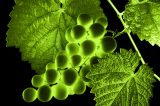LalVigne under Investigation #1
In the context of current viticulture, the change observed in the climatic records of the last decades, with the rise in temperatures and the unusual rainfall distribution, is challenging for wine growers and winemakers to getting balanced grapes and wines, as these changes are leading to growing differences between technological maturity and aromatic and phenolic maturations. In order to face these changes, wine growers try to apply agronomic practices that can counteract these effects. Often these practices are not selective and have unwanted effects on different parameters of production or quality of the grapes.
UI Vineyard Solutions #1 2020



